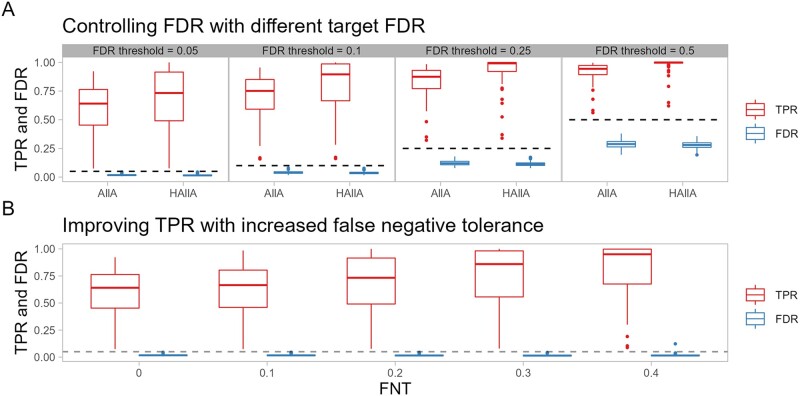Fig. 2.
HAllA improves statistical power while controlling the FDR. Fifty paired, synthetic datasets with 200 features and 50 samples containing clusters with linear block associations were analyzed. (A) With FNT = 0.2, HAllA maintains the simulated FDR below the target (here (0.05, 0.1, 0.25 and 0.5), with associated tradeoffs in statistical power. In addition, HAllA is consistently better powered than AllA association testing across this range of target FDR values. Dashed lines parallel to the x-axis indicate the target FDR value in each comparison. (B) By increasing the FNT, HAllA can improve the true positive rate with a comparatively minor increase in FDR

